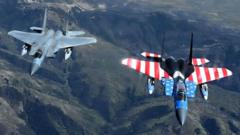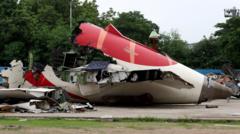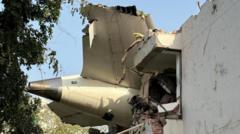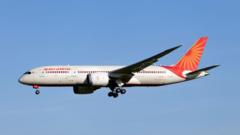The strike marks the first major walkout in Boeing's defense sector since 1996, signaling deep-rooted employee discontent.
Boeing Defence Workers Strike: A New Challenge for the Aerospace Giant
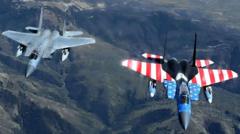
Boeing Defence Workers Strike: A New Challenge for the Aerospace Giant
3,200 Workers Demand Better Pay and Working Conditions Amid Ongoing Corporate Struggles
More than 3,200 workers at Boeing’s defense division initiated a strike on Monday, compounding challenges for the beleaguered aviation company. The unionized employees, primarily located in Missouri and Illinois, who are responsible for manufacturing F-15 fighter jets along with other military aircraft, opted to strike due to disagreements over pay, work schedules, and pension benefits.
In response to the walkout, Dan Gillian, vice president of Boeing's Air Dominance unit, expressed disappointment over the union's rejection of a proposal featuring an average wage increase of 40%. He emphasized that the offer was designed to recognize the hard work of the employees. The strike, orchestrated by a local branch of the International Association of Machinists and Aerospace Workers (IAM), highlights ongoing employee grievances, with the union asserting that the action is about "respect and dignity" rather than "empty promises."
This marks the first major strike at Boeing's defense sector since 1996, when a lengthy strike lasted over three months. The IAM represents approximately 600,000 members across pivotal sectors like aerospace and manufacturing, making this strike particularly significant in terms of potential impact.
Boeing's CEO, Kelly Ortberg, has attempted to downplay the consequences of the current strike, noting its scale pales in comparison to the extensive walkout last year involving around 30,000 workers in the passenger division, which had severe financial ramifications for the company. Ortberg stated that the company will "manage" the current strike without much concern.
Boeing has faced a tumultuous period marked by crises, including two catastrophic plane crashes and other operational failures leading to safety concerns. Last year, the company recorded its lowest aircraft delivery figures since the pandemic, a mere 348 units. The dual challenges of labor disputes and corporate reputation cast uncertainty on Boeing's path to recovery in the aerospace industry.
In response to the walkout, Dan Gillian, vice president of Boeing's Air Dominance unit, expressed disappointment over the union's rejection of a proposal featuring an average wage increase of 40%. He emphasized that the offer was designed to recognize the hard work of the employees. The strike, orchestrated by a local branch of the International Association of Machinists and Aerospace Workers (IAM), highlights ongoing employee grievances, with the union asserting that the action is about "respect and dignity" rather than "empty promises."
This marks the first major strike at Boeing's defense sector since 1996, when a lengthy strike lasted over three months. The IAM represents approximately 600,000 members across pivotal sectors like aerospace and manufacturing, making this strike particularly significant in terms of potential impact.
Boeing's CEO, Kelly Ortberg, has attempted to downplay the consequences of the current strike, noting its scale pales in comparison to the extensive walkout last year involving around 30,000 workers in the passenger division, which had severe financial ramifications for the company. Ortberg stated that the company will "manage" the current strike without much concern.
Boeing has faced a tumultuous period marked by crises, including two catastrophic plane crashes and other operational failures leading to safety concerns. Last year, the company recorded its lowest aircraft delivery figures since the pandemic, a mere 348 units. The dual challenges of labor disputes and corporate reputation cast uncertainty on Boeing's path to recovery in the aerospace industry.


